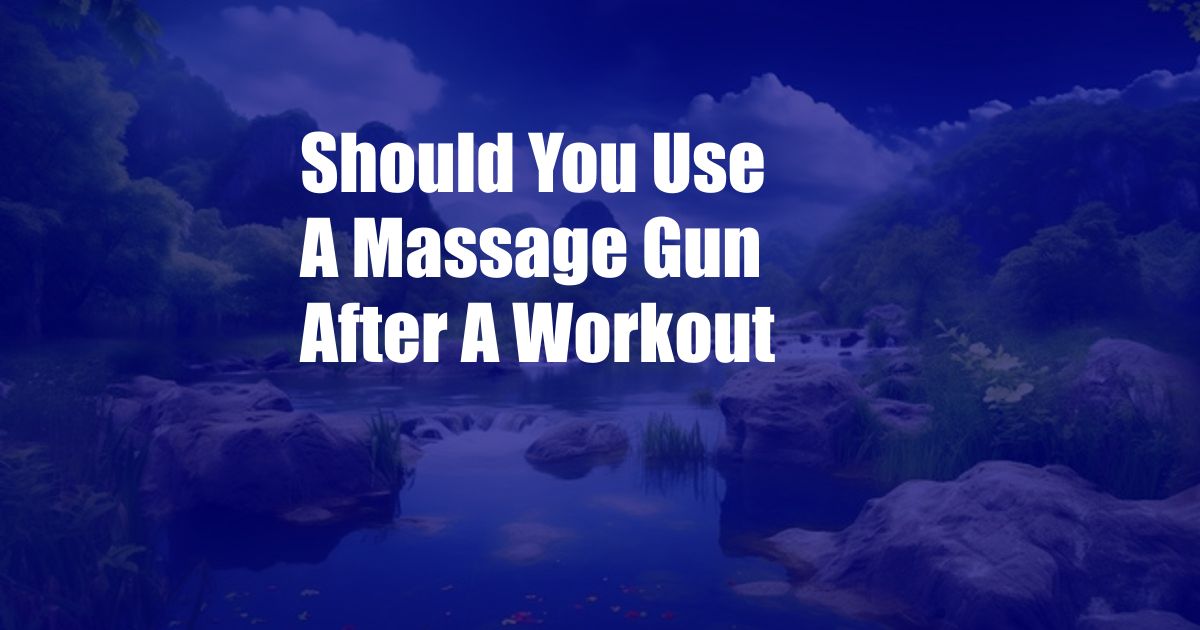
Should You Use a Massage Gun After a Workout?
After an intense workout, your body craves rest and recovery. One popular method of enhancing recovery is using a massage gun. But how effective are massage guns, and should you incorporate them into your post-workout routine? Let’s explore the benefits and considerations of using a massage gun after a workout.
Massage guns, also known as percussive therapy devices, deliver rapid, deep pulsations to muscles. This action helps improve circulation, reduce muscle tension, and promote recovery. Using a massage gun after a workout can potentially:
- Reduce muscle soreness: Massage guns can help break down lactic acid buildup, which contributes to muscle soreness. This can reduce post-workout discomfort and speed up recovery.
- Improve range of motion: Massage guns can help loosen tight muscles and improve flexibility, allowing for better range of motion and reduced stiffness.
- Enhance circulation: The rapid pulsations of a massage gun can stimulate blood flow, which brings nutrients to muscles and helps remove waste products.
- Promote relaxation: Massage guns can help relax tense muscles, reducing overall body tension and promoting a sense of well-being.
Choosing and Using a Massage Gun
When selecting a massage gun, consider the following factors:
- Speed settings: Different massage guns offer varying speed settings, allowing you to adjust the intensity of the massage based on your needs.
- Amplitude: Amplitude refers to the depth of the massage. Higher amplitude settings provide deeper penetration, targeting larger muscle groups.
- Attachments: Massage guns come with different attachments designed for specific muscle groups. Choose a massage gun with attachments that suit your needs.
To use a massage gun effectively after a workout, follow these tips:
- Use a light pressure: Avoid pressing too hard on your muscles, as this can cause discomfort and bruising.
- Massage for short durations: Start with short massage sessions of 30-60 seconds per muscle group.
- Focus on major muscle groups: Prioritize massaging large muscle groups such as the quads, hamstrings, glutes, and calves.
- Avoid sensitive areas: Do not use a massage gun on areas with injuries, open wounds, or bones.
- Listen to your body: Stop using the massage gun if you experience any pain or discomfort.
FAQs
- Q: Are massage guns safe to use?
A: Yes, massage guns are generally safe to use when operated correctly and according to the manufacturer’s instructions. - Q: Can I use a massage gun if I am pregnant?
A: It is not recommended to use a massage gun if you are pregnant, as the vibrations can potentially harm the fetus. - Q: How often should I use a massage gun?
A: The frequency of massage gun use depends on your individual needs and preferences. Start with a few sessions per week and gradually increase the frequency if desired. - Q: Can a massage gun replace a professional massage?
A: While massage guns can provide some benefits, they cannot fully replace the therapeutic benefits of a professional massage.
Conclusion
Incorporating a massage gun into your post-workout routine can offer several benefits, such as reducing muscle soreness, improving range of motion, and enhancing circulation. Choosing the right massage gun and using it correctly is crucial for maximizing its benefits and minimizing any potential risks.
If you’re considering using a massage gun, consult with a healthcare professional or a qualified fitness expert to ensure it’s appropriate for your needs. By following the tips and precautions outlined in this article, you can safely and effectively use a massage gun to enhance your post-workout recovery.